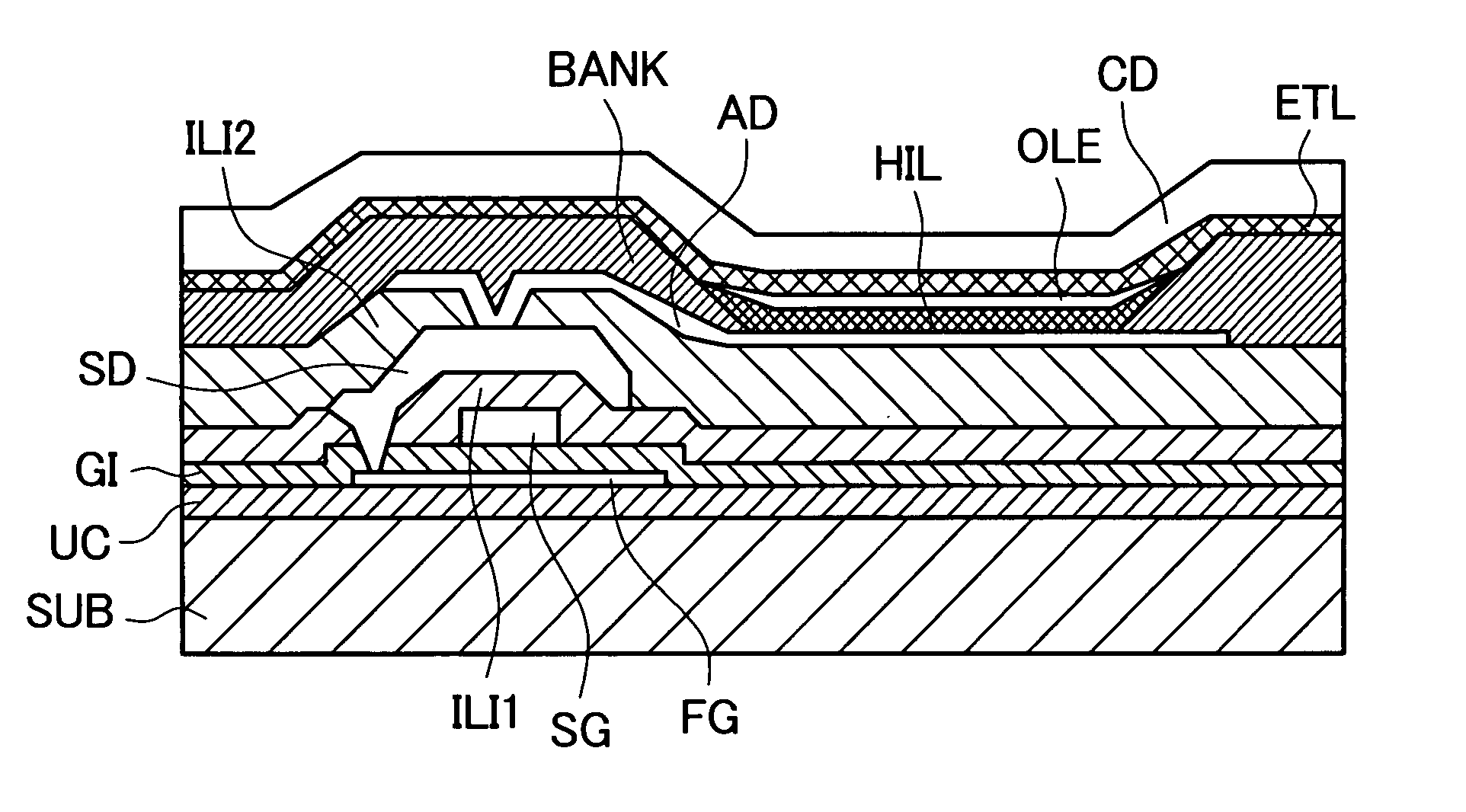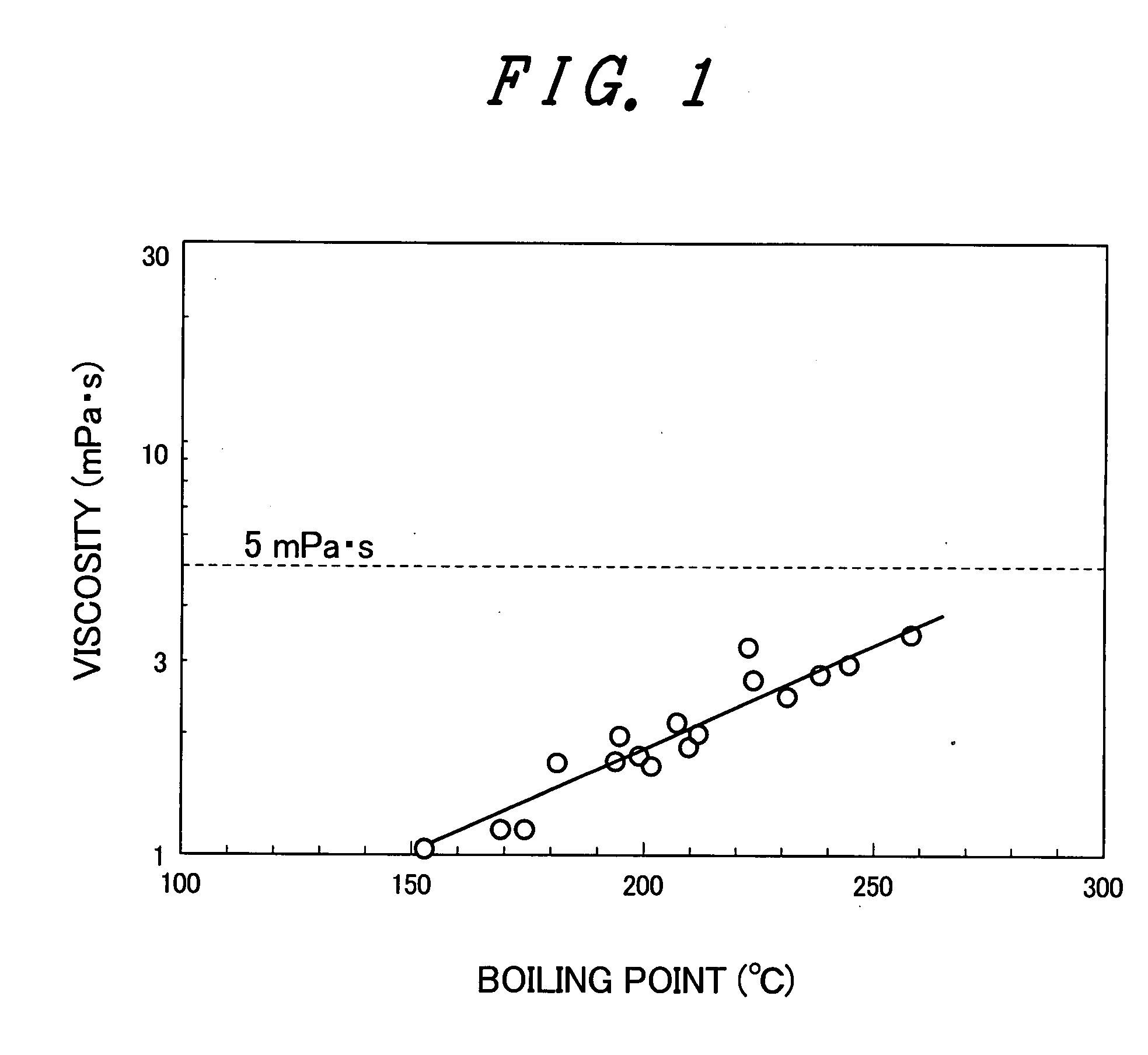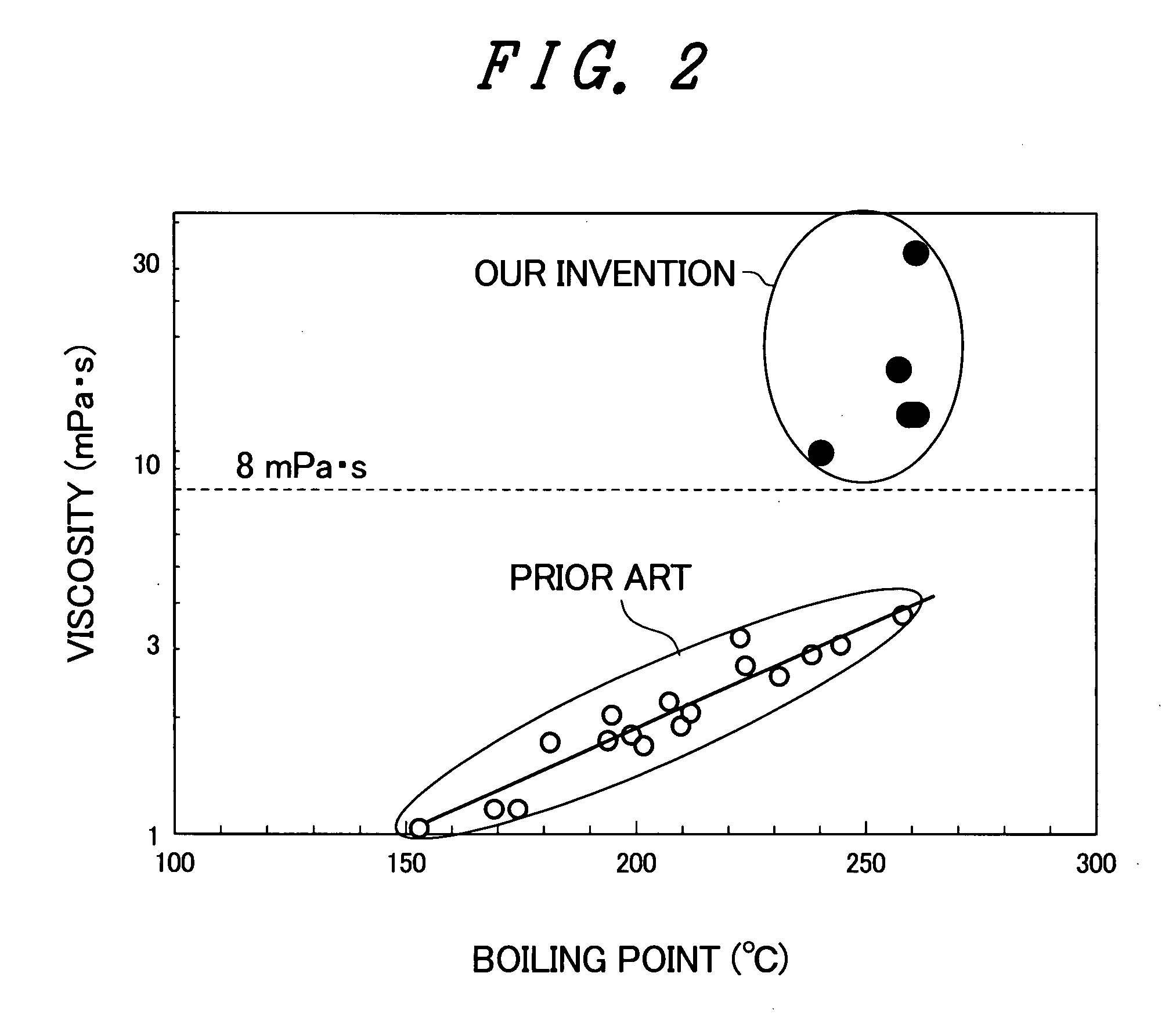Organic EL display device and organic thin film device
a display device and organic technology, applied in the direction of discharge tube luminescnet screens, natural mineral layered products, transportation and packaging, etc., can solve the problems of short life of the device, difficult so far to obtain an ink composition capable of stably discharging, and difficult to realize a high purity of organic materials as described previously, etc., to achieve the effect of viscosity
- Summary
- Abstract
- Description
- Claims
- Application Information
AI Technical Summary
Benefits of technology
Problems solved by technology
Method used
Image
Examples
example 1
[0031]FIG. 3 shows a layer structure which is employed in the present Example. A structure in which a glass-made substrate SUB, an undercoat layer UC, a polysilicon layer FG, a gate insulating layer GI, a metallic gate electrode layer SG, a first interlayer insulating layer ILI1, a source·drain metallic layer SD, a second interlayer insulating layer ILI2, an EL device lower electrode layer AD, a bank BANK, an organic functional layer OEM (including a hole injection layer HIL, a light emitting layer OLE and an electron transport layer ETL), and an upper electrode CD are stacked in this order is provided on a first substrate. The substrate SUB is an alkali-free glass having a thickness of 1.1 mm. The undercoat layer UC is configured of a silicon nitride layer having a thickness of 150 nm and a silicon oxide layer having a thickness of 100 nm as formed by means of plasma CVD. The p-Si layer FG is formed in an island form in a forming place of a thin film transistor (hereinafter referre...
example 2
[0043] Au was vapor deposited in a thickness of 20 nm on a polyimide substrate having a thickness of 150 μm at a vapor deposition rate of 0.1 nm / sec under vacuum of 10−6Torr. This was subjected to patterning by a photolithography method, thereby forming a source-drain electrode. A source-to-drain channel length was set up at 10 μm.
[0044] Next, 1,3,5-tris[4-(diphenylamino)phenyl]-benzene (TDAPB, manufactured by Bayer AG) was dissolved in a 1 / 1 mixed solvent of 1,2,3-trimethoxybenzene and 3,4,5-trimethoxy-toluene so as to have a solids concentration of 0.5% by weight, and the solution was passed through a PTFE-made filter of 0.2 μm to form an organic semiconductor layer forming ink.
[0045] This ink was fabricated in a thickness of 50 nm on the hole injection layer within the pixel by using a piezoelectric type inkjet system and baked on a hot plate at 85° C. for 15 minutes, thereby obtaining an amorphous film.
[0046] Subsequently, an SiO2 film having a thickness of 500 nm was formed ...
PUM
| Property | Measurement | Unit |
|---|---|---|
| viscosity | aaaaa | aaaaa |
| viscosity | aaaaa | aaaaa |
| thickness | aaaaa | aaaaa |
Abstract
Description
Claims
Application Information
 Login to View More
Login to View More - R&D
- Intellectual Property
- Life Sciences
- Materials
- Tech Scout
- Unparalleled Data Quality
- Higher Quality Content
- 60% Fewer Hallucinations
Browse by: Latest US Patents, China's latest patents, Technical Efficacy Thesaurus, Application Domain, Technology Topic, Popular Technical Reports.
© 2025 PatSnap. All rights reserved.Legal|Privacy policy|Modern Slavery Act Transparency Statement|Sitemap|About US| Contact US: help@patsnap.com



